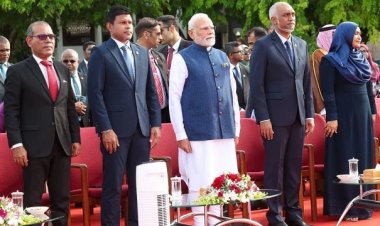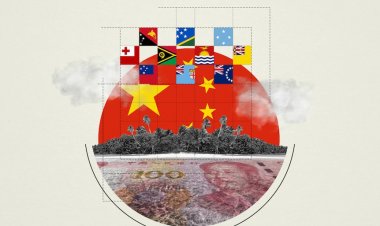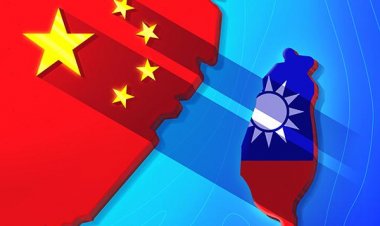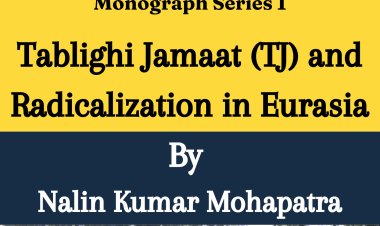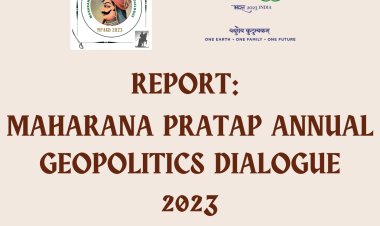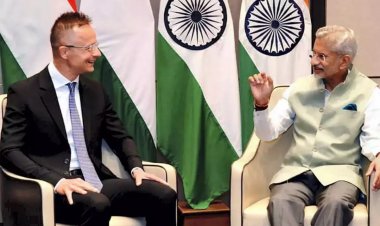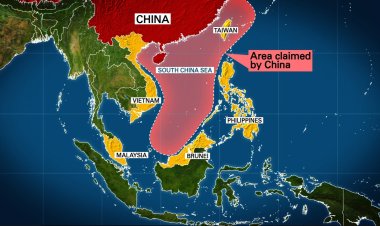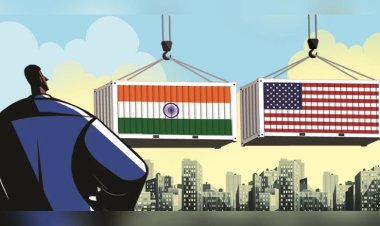India's Options Beyond the Quad (Part 1)
The following commentary looks at the QUAD alliance in great detail to understand India's position within this alliance and the more significant geopolitical relevance and significance. This article also examines the complex politics of the Asia-Pacific and the role the US partnership has to play in this complex setup.
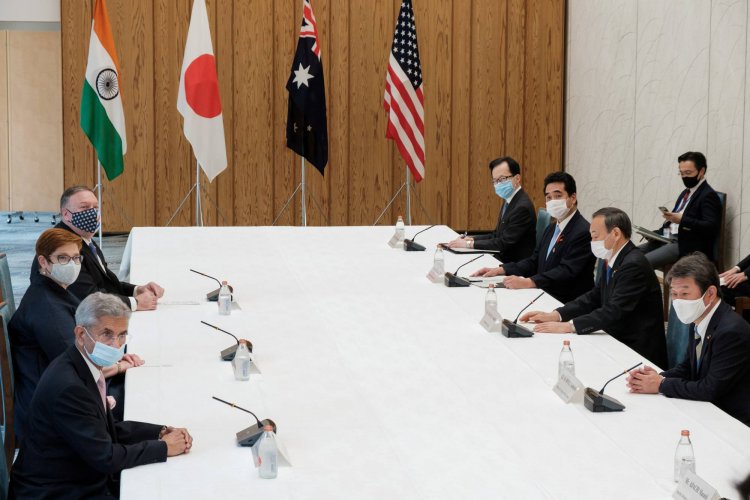
Commentary (Part one of a two-part series)
By Karsten Riise
This article is a part of a 2 part series by the author exploring the complex geopolitics of Asia-Pacific.
Quad – is there anything in the name? There are many talks; some would call it to hype about the “Quad” these days. The Quad is a semi-formalized grouping organized by the USA involving Japan, Australia – and India. Without the USA to organize it, there would be no Quad.
Geostrategy is an excellent old tool for evaluating the Quad. To start, let us look at the map. Does India have common borders for shared army operations with Japan or Australia, or the USA? No – far from. Do these countries share “common waters” for India’s navy to operate in with them? Not at all – except, of course, if one thinks that all waters in the world are territorial waters of the USA. Do these countries share a common air space? Not that either. What about a mutual logistics chain? No, not even that. Any Sea Lines of Communication (SLOC) between India and Japan would, in case of conflict, be cut off in the South China Sea, which China controls. Is India reliant on US-Japanese-Australian armament producers? No – fortunately not. Does India need the US F-35 aircraft or the US Patriot / THAAD missile systems? No – they are nearly worthless. Is the Quad a kind of alliance where Japan will guarantee to come to India’s aid? No. Is that about to change? No. Is there a grand strategy, cultural heritage or big vision tying India to Japan, Australia, and the USA? Far from. Very far from. The US has decided to strive for US global primacy for the indefinite future. India is and always will be against the US’ agenda of unipolar primacy. China is rising, and that is the problem of the USA. It is all about size.
Shortly after the Soviet Union disappeared, on 8 March 1992, the US Department of Defence in the Pentagon developed a new global objective for the USA: “... the Defense Department asserts that America's political and military mission in the post-cold-war era will be to insure that no rival superpower is allowed to emerge in Western Europe, Asia or the territory of the former Soviet Union.” (emphasis added)
Evidently, the U.S. objective was to continue US primacy indefinitely by ensuring that no other power would ever emerge or be able to emerge to rival the USA.
The US strategy of thwarting any new rival power from emerging is consistent with all US foreign policy and political actions since then. Moreover, it covers the whole world, including all of Europe, China—and even India.
What China does or does not do is evidently only an excuse for the USA. Since 1992, the USA has accepted no power to rival or surpass it. The real problem for the US is simply that China is rising and will soon surpass the USA. They can always invent further arguments in each case. China is, of course, a concern for India, too, especially due to the old wounds about an unsettled border. But we must remember that India is rising too. One day in this century, India will surpass the USA. This is India’s vision, and the USA will be against it. There is no shared strategic vision. The Quad has no material content. When something is devoid of material content, what remains is pure imagination. This is why I call the Quad a thing from Disneyland. Despite being devoid of material content, the Quad has been sold to the global media as something “new”. The Quad is a PR operation for influence. India already has options to work together with the USA in naval exercises, special forces methods, intelligence, etc. One of the objectives of the American Quad hype about “shared values” is to sell more US weapons like the F-35, which are decidedly not what India needs (or can afford). You are always invited to spend your money. There is no need for a “Quad”. India should, of course, be open to security cooperation with all relevant countries — the USA, Japan, and Australia. And not only with them but also with Russia and NATO. Even with Pakistan, one day, when you find peace together in your shared South Asian family.
Is the USA a Valuable Partner?
The USA has a lot of military expertise, technology, experience, practice, and intelligence. India should learn everything there is to learn from US “expertise”. However, it is worth noting that the US has not won a major war since 1945. There must be a reason for that. The Korean war ended in 1953 with a tie. The USA could not even win in Korea. Vietnam was a significant defeat for the USA in 1975. The only winner after two US wars against Iraq was Iran. And now, the USA has lost its longest war ever in Afghanistan. What is wrong with the US military? India needs to ask this question. One thing is that the USA is obviously fighting the wrong wars – wars of (bad) “choice”. The USA also has unconditional and unattainable aims. The US also lacks a sense of equal partnership with other peoples and cultures globally, especially non-European cultures. It is also worth noting that the USA since 1945—except for minor actions like Grenada—has had nothing but bad military outcomes despite the American use of overwhelming military force. Enormous or oversized efforts and adverse US outcomes must indicate that the USA has an ineffective and deficient military. The most effective army in Europe was Germany until 1945.
In his book “Fighting Power”, Martin van Creveld compares the performances of the German and US armies during WW II. Measured on several parameters, Martin van Creveld consistently found that the German Army during WW II was widely superior to the US Army in fighting power. Japan learned from Germany already in the late 19th century. Did the USA make a comprehensive effort to learn and adopt the German military's methods, thinking, traditions, and doctrines? No. The USA in World War I copied French methods, a static programmed thinking with amassed use of artillery (today bombardment from the air) and less movement, which led to defeat for France in two world wars. The USA back then also had a lack of competent officers and soldiers. Therefore, the USA developed enormous oversized military staff, detailed planning for how those in contact with the adversary should act in minor detail. Precisely the opposite of the “Auftragstaktik” which Gerhard von Scharnhorst instituted in Prussia, Germany, building on well-educated officers and soldiers, who were given a mission (Auftrag), had high education, trust from above, and leeway to act optimally in the ever-changing circumstances of conflict, as long as they pursued the “commander’s intent”. Carl von Clausewitz was a pupil of Scharnhorst.
It is a well-known phenomenon that Generals often prepare to fight the last war over again. I will assert that the USA is mentally still fighting wars of the past. The US Pacific War of 1941-45 was won with massive strategic bombing (the B-29) and big aircraft carriers. Since 1950, the B-29 were upgraded to the B-52, which has been a backbone of US air strategy ever since. The US aircraft carriers are also more significant than they were in 1945. But basically, the structure of the US strategic setup is the same till today, 76 years later.
The USA now (with Biden) is also re-fighting the Cold War over again. The re-fighting of a new Cold War is also evident in the title and content of the “Longer Telegram” published in the Atlantic Council by a US government-related source called “Anonymous”. The “Longer Telegram” in the title, aim, and general approach overtly references George F. Kennan’s “Long Telegram” about containment of the Soviet Union, which kicked off the first Cold War on 22 February 1946.
This time, however, the USA will not prevail victorious in a Cold War. Biden is making a fatal mistake of trying to repeat it. As Kishore Mahbubani rightly points out, China is better prepared internally and better integrated with the world economy than the USA.
Part 2 of this article will explore the alternate options available to India.
Karsten Riise is a Master of Science (Econ) from Copenhagen Business School and has a university degree in Spanish Culture and Languages from Copenhagen University. He is the former Senior Vice President Chief Financial Officer (CFO) of Mercedes-Benz in Denmark and Sweden. At the time of appointment, he was the youngest and the first non-German in that top position within Mercedes-Benz’ worldwide sales organization. He writes regularly for the Russian International Affairs Council.
Disclaimer: This paper is the author’s individual scholastic contribution and does not necessarily reflect the organisation’s viewpoint.


